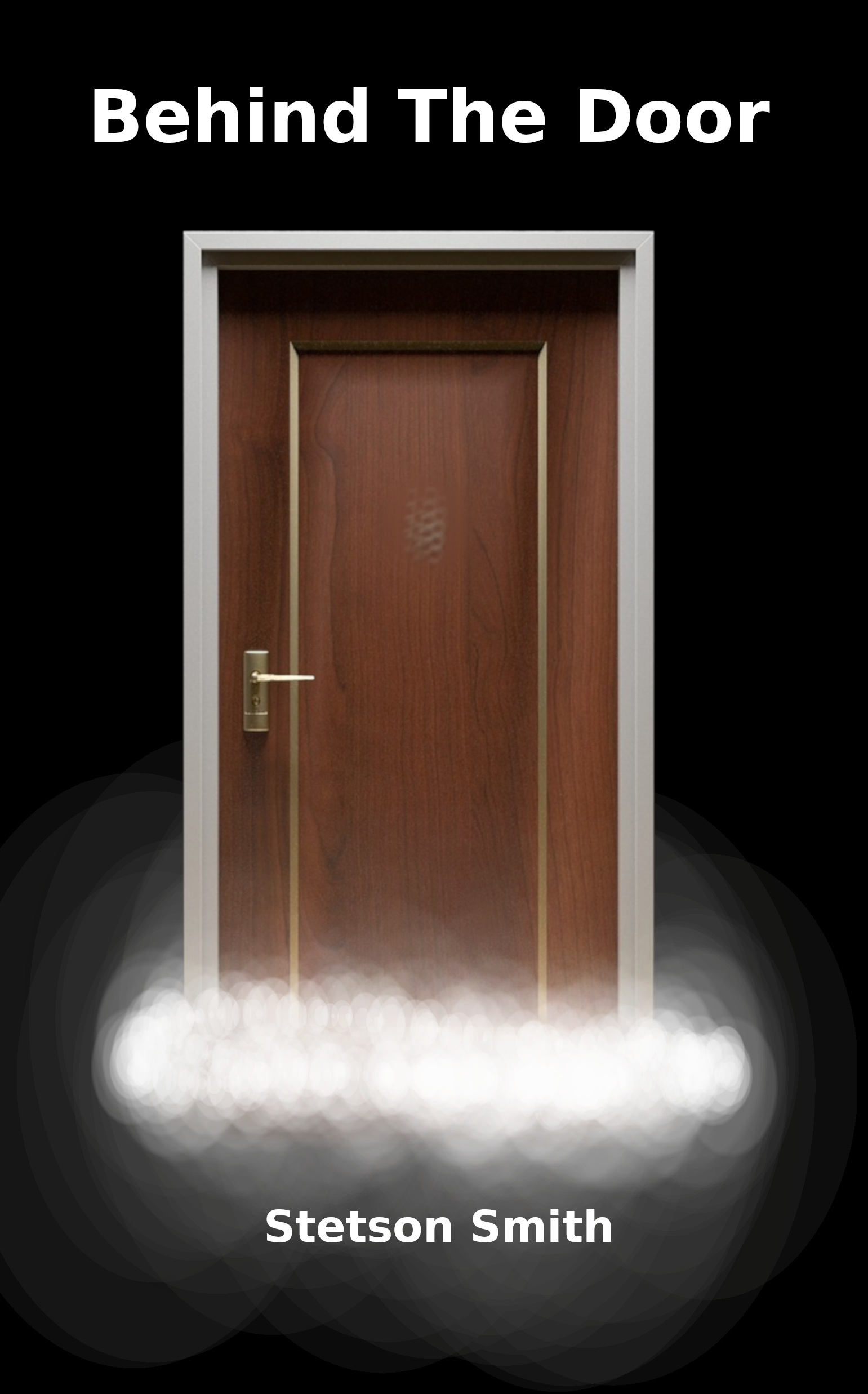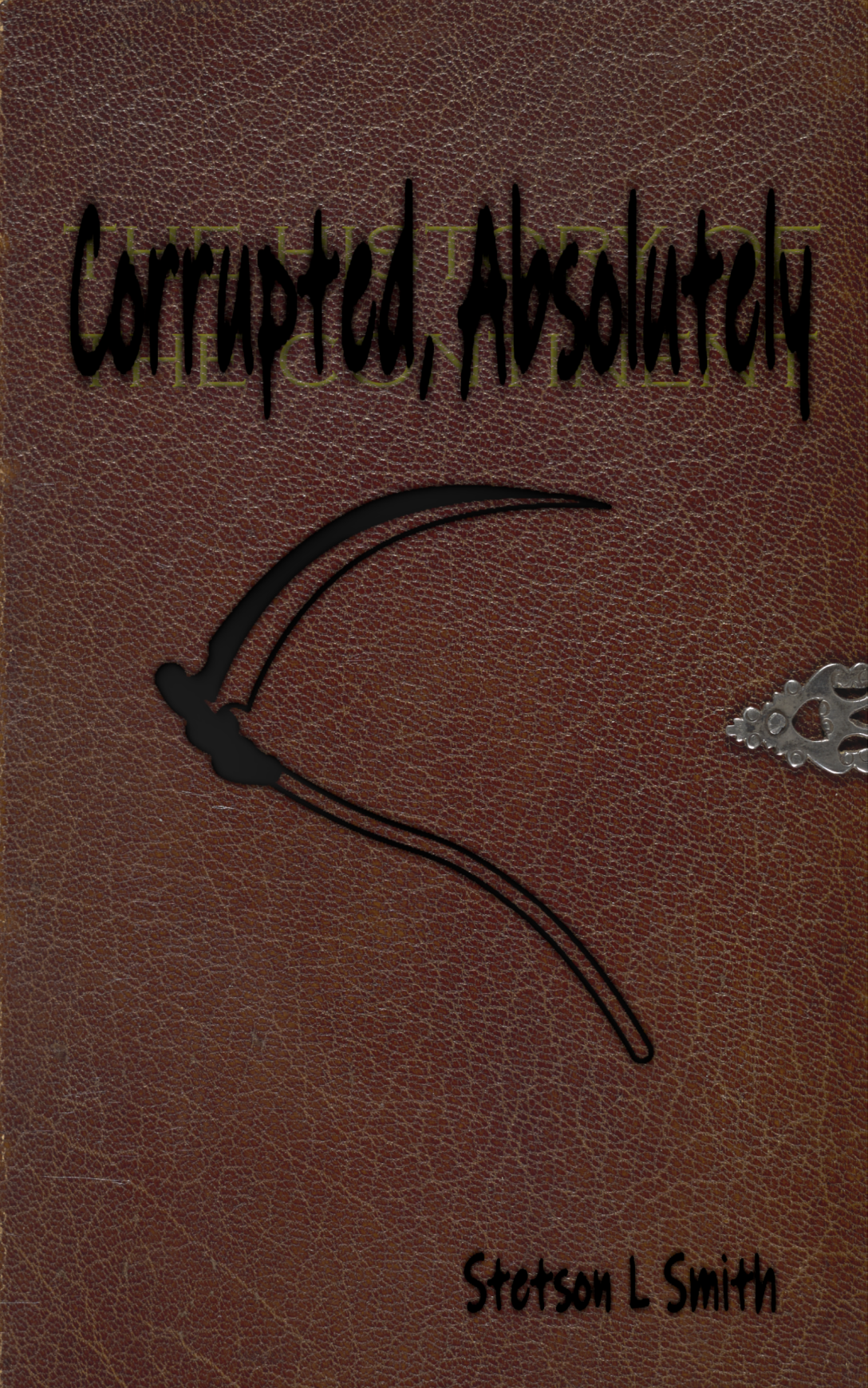I can’t believe I never made the announcement here for the preorder, but that’s okay because it’s been released!
Continue reading “Corrupted, Absolutely Released!”Life
Do I believe? Of course I do. I’ve seen them. Well, at least some of them.
The thing you need to understand about the Chaotic Ones is that they’re never what you expect them to be. Kind of obvious, right?
Let me tell you about the time I met Life.
Continue reading “Life”The Perplexing Pronoun Problem
Disclaimer: pronouns, in respect to trans people and gender more broadly, are having a moment right now. While that isn’t the focus of this post, I will be talking about pronouns in this way toward the end. If this bothers you, feel free to find someone who cares.
Pronouns. On their face, a pretty simple concept. A pronoun is just a generic word we use in place of a proper noun. He, she, they, it, we, you, etc. are all examples of common pronouns. We learned them in school and they feel pretty simple. What your English class perhaps didn’t teach you is when to use them.
Maybe you’re thinking: “of course I know how to use pronouns, I use them every day.” But that is exactly what I’m talking about. The parts of speech we use the most are the ones that need the most interrogation in our writing. In speech, if we construct an awkward sentence, it lasts a few seconds before we move on. In writing, that same awkward sentence can sit with the reader for much longer, especially if it’s awkward enough to pull them out of the story. With that in mind, let’s talk about avoiding awkwardness with pronouns.
When you have one character in the scene, it can be pretty intuitive where to place the pronouns. You really only need the character’s name every few paragraphs specifically to keep them in the readers mind. Any more than that and you risk redundant awkwardness. Take this paragraph for example:
Lydia woke up exhausted. Three hours wasn’t enough for anybody and her body was going to remind her of that every second of the day. It wasn’t like she didn’t want more, but the job wasn’t going to do itself and it wasn’t like there was anyone else who could do it. She had resigned herself long ago to the occasional twenty hour day. She just hoped she wasn’t in for another one. Judging from the noise already coming from down the hall, she wasn’t going to hold her breath.
In that paragraph, I reference the POV character, Lydia, in every sentence, but only once do I actually use her name. Contrast that with this paragraph:
Lydia woke up exhausted. Three hours wasn’t enough for anybody and Lydia’s body was going to remind her of that every second of the day. It wasn’t like Lydia didn’t want more, but the job wasn’t going to do itself and it wasn’t like there was anyone else who could do it. Lydia had resigned herself long ago to the occasional twenty hour day. Lydia just hoped she wasn’t in for another one. Judging from the noise already coming from down the hall, she wasn’t going to hold her breath.
Notice how that paragraph is a much clunkier read than the first one, and I didn’t even replace all the pronouns referring to Lydia in it. But I bet you still noticed all the “Lydias” there. That’s because proper nouns, or really any word that’s been Capitalized in the middle of a sentence, register to your brain as important, so you don’t glide over them like you do the other words in the sentence. That means every repetition of a proper noun in your writing forces the reader to slow down. This can be used to great effect if that is your intention, but when done unintentionally, can make the piece harder to read than necessary.
Of course, that’s great for scenes with one character, but how many single-character scenes do we really have? What about scenes with a few speaking or acting characters? As you might guess, that doesn’t have as clean-cut of an answer. In scenes where each character has different pronouns, it’s basically the same as for one character. We know which pronoun corresponds to which character and can maintain that for a few paragraphs. For scenes where two or more characters have the same pronouns, it’s a little stickier but the general rule is; when the action is being done by someone else with the same pronoun as the previously named person, use the name, any action they do after that until the next person does one can use a pronoun. That sounded confusing, let’s look at an example:
Lydia rushed down the hall with sirens blaring all around her. She burst into the control room where James and Stephani were already at their consoles.
“What’s going on?” she demanded of them.
“I don’t know,” responded Stephani. “But I’m working on it.” Her fingers flew over the keyboard, as she presumably ran diagnostics over every electrical piece on the ship. She reached up to her screen and gave it a flick. “There’s something odd on the one of the external sensors. I’ve sent it over to James to look at.”
James swiped frantically over his five screens. “I’m not seeing anything outside the ship. Are you sure that sensor isn’t just faulty?”
“I’ve double-checked,” she replied. “It’s responding just fine, but we can always check again.” She squinted at her screen. “Although, it does look like the only thing it could be.”
Lydia sighed. Another long day. “I’ll send someone to look at it,” she said. “If we’re lucky, that’s all it’ll be.”
This demonstrates what I mean by the rule. First, it mentions Lydia by name. Every action she does after that uses pronouns, until Stephani does an action where it uses her name instead. It continues with pronouns until Lydia does an action again.
Sometimes, it may feel as if you need to use character’s names more often for clarity, but readers understand more than we typically give them credit for. There needs to be a balance maintained between clarity and redundancy, which is where the rule comes in handy. Of course, the best way to ensure that your writing is clear while making sure it reads well is to have someone else read it but reducing that redundancy before you even send it to a reader will create even better writing.
Now, when to use them isn’t the only sticky thing about pronouns, what pronouns to use can be difficult at times. I’ve seen on more than one occasion someone asking how to write trans characters, especially in respect to pronouns.
And here’s my second disclaimer: I do not speak for the entire trans community, so please don’t use this as your only source of information for pronoun use in regards to trans characters.
With that out of the way, let’s say you have a trans character. What pronouns do you use? The simple answer is: whatever pronouns they use post-transition. Yes, even if you’re talking about things they did pre-transition. As an example, let’s say that Stephani from the earlier example is a trans woman and worked on another ship before her transition.
Stephani’s eyes went wide and she froze at her screen.
“What’s wrong?” asked Lydia.
“It’s just-” Stephani began without looking up. “This is like back then.”
That explained the look. Lydia knew that there had been some disaster on Stephani’s previous assignment. Some diagnostic she had gotten wrong that ended up with people getting hurt. She never offered any details and Lydia never pried.
“Are you good?” she asked.
Stephani shook herself out and nodded. “I’ve got this. I’m stronger than I was back then.”
That may not be the strongest example, but you get the idea. Use the character’s current pronouns even when describing pre-transition actions. I’d say that this rule would also apply to full-on flashbacks, as it keeps a more consistent character for readers and limits confusion. In fact, unless you’re writing a story specifically about transition, (which, if you’re cis, I’d strongly discourage) there is no reason to use a trans person’s previous pronouns.
I’d like to talk about the grammar around neopronouns but there’s too much there for me to throw in at the end of an article. I will say, however, that if you go on social media and look at the profile of people who list their pronouns, it’s usually listed the same way: she/her, he/him, they/them, etc. This gives you an excellent template to use neopronouns properly as when you run into someone with them, they’re usually listed in that same format. For example, if someone has xie/xer as xer pronouns, you’d use xie in place of she and xer in place of her. Of course, I can’t say that will map perfectly for every neopronoun out there but it’s a good start for your research on specific pronouns.
And that’s it! As always, there are no hard and fast rules in writing, just suggestions and norms. The most important thing is intentionality in your writing so your readers feel what you actually want them to feel and your words don’t get in the way of that. The more you know about the craft of writing, the better you can control how you “break” the “rules” of it.
If you like these articles, maybe consider buying my book? See the things I talk about in action.
PRIDE
I don’t usually stray away from the format of writing advice and short stories, but I wanted to talk about things a little more long-form than I can on either Facebook or Twitter so, here we are.
That flag up there? That’s the Pride flag. A more inclusive Pride flag. As much as I love the rainbow, we need something like this because our movement, a movement that is supposed to be about liberation for all, keeps forgetting people.
Why do I bring this up now? With all the riots and police brutality happening right now, is a flag really that important? The short answer is; yes it is important. And that’s because it’s all connected.

Does anybody remember this flag? Do you remember when it was released? I do. The absolute vitriol the (mostly white) community had for those little black and brown stripes. The idea that anyone would change the rainbow to center or even just explicitly include black and brown people enraged them. That rage reached a fever-pitch when the flag I posted first was introduced.
Because the truth of it is; that rainbow, which was supposed to represent everybody, really doesn’t. Over the years, it’s come to represent the capital-g Gay community. That is, it represents gay men, and more often than not, specifically white gay men. Sure, those of us who aren’t capital-g Gay men have our own flags but that’s not really united liberation, is it? And Black and brown communities, who spearheaded the LGBT movement for so long, are being pushed out of it. The solution? To explicitly include them, right there on our flag.
So why use the flag I posted first? Why single out the trans community? (trans colors are pink, blue, and white) To answer that, I’ll ask you a question. How many of you who aren’t part of the trans community had heard of trans issues before, say, 2015. For many of you, it was probably 2010 at the earliest. This gives the false impression, even to many within the LGBT+ community, that gender issues are kind of a new thing. They’re not. At the very forefront of the Stonewall riots were Black trans women and those same people have contributed so much to the cause since then. Many of the books burned by the Nazis prior to WWII contained academic transgender research. Despite all of this, they’ve been erased from the struggle, or, at best, been an extreme afterthought until they forced others to recognize them. That’s why we should use that flag. We need to recognize that the story of our struggles is the story of trans struggles, you can’t separate them.
So, I’d like a pledge. Use that flag to represent the community as a whole and designate yourself as anti-exclusionary. That means you will:
- Explicitly include black and brown people in our struggles and center them often
- Explicitly include trans people in our struggles and show that we will not “drop the T”
- Recognize that nonbinary genders are real and respect everybody’s pronouns, yes even the neopronouns
- Recognize that trans people do not owe us expensive medical procedures or hormones in order to be trans
- Not insist that bi people prove their sexuality to you, even if they’re in a so-called “straight-passing” relationship
- Not participate in community infighting that seeks to invalidate another sexuality/gender (ie: pansexuality doesn’t exist, neopronouns are bad, don’t do that)
- Recognize that asexuals exist and have just as much right to this community as the rest of us
If there is anything I may have forgotten from this list, please let me know.
So, what does this all have to do with writing? As I said above, it really doesn’t have anything to do with it, I just decided to use my space to talk about something I’ve been thinking about. Except for, as writers, we are a voice. That’s our main thing, whether we like it or not. All works are inherently political, no matter how hard you work to keep “politics” out of it. With that in mind, it’s important to actually use our voice. Intentionally. To make sure that we are pushing for something that’s actually good instead of inadvertently advocating something we don’t want to. So, even if you use the flag and advocate loudly, take a look at your stories, what are you advocating? Hopefully what you want.
Dave
Dave was a prepper.
He had 500 gallons of water and enough food to last him for a year.
Dave was a prepper.
His coworkers though he was crazy. they had given him the name “prepper” as an insult, but he wore it with pride. He was a prepper because he was prepared. When society went to shit, which it would, he would survive.
Continue reading “Dave”The Harrowing Head-Hop
Awhile ago, I said I’d do both an article and a Twitter thread on what I called pseudo-omniscient perspective, also known as; head-hopping. This is half of that promise fulfilled.
First, let’s define what pseudo-omniscient is, and is not.
Point of View
There are three main points of views, or POVs that everything, including pseudo-omniscient, fall under.
- First Person: the narrator is a character within the story, typically the protagonist. This provides a sense of immediacy, but limits what you can show since the reader can only see what the character sees.
- Second Person: the protagonist is you, the reader. If done well, can provide a greater sense of immersion. Great for shorter works, hard to sustain for longer ones.
- Third Person: most common POV type. The narrator doesn’t exist in the story and the protagonist is a normal character. Can be tailored to be as close or as distant as you want it to be.
Pseudo-omniscient falls squarely within the Third Person category.
Most books written in third person fall in one of two categories: close-third and omniscient. Think of pseudo-omniscient as being between those two. At the risk of veering off-topic, I’d like to talk about both of those types so we can see what pseudo-omniscient really is.
Continue reading “The Harrowing Head-Hop”The Thursday Chronicles
Thursday, November 6th 1958
“You really this this will work?” asked Steve.
“Of course it will,” replied the doctor. “We’ve worked so long for this. Soon, we will accomplish the dream of time travel! Now, flip the switch.”
Steve did as he was told and flipped the switch, sending massive amounts of power straight from the grid to the machine. Lights dimmed all around them, the machine hummed, loud enough to vibrate his teeth then… nothing.
“It didn’t work, did it?” the doctor asked, his face falling. It was third attempt and the doctor’s confidence was not infinite.
“It did not,” Steve replied.
“Ah, well. We’ll get it next time.”
Thursday, June 17th 1971
“Honey, there’s somebody at the door for you,” Steve’s wife called from the front room
Steve trundled up to the front room. He didn’t know what he expected when he got there, but the doctor wasn’t it.
It had been thirteen years since he saw him last. While things had changed dramatically for Steve, the wife and kids were big ones, but he had also filled out and had some gray on his temples now, the doctor looked exactly like the last day they saw each other.
“Steve!’ the doctor shouted, throwing his hands wide. “I found you!”
“You did.” Steve avoided the hug. “Why were you looking for me?” He thought he had made it pretty clear he was done with all of the doctor’s mad scientist stuff.
The doctor grabbed him by the shoulders before he could dodge. “It worked!” he said with a wild look in his eyes.
Steve squinted at him. “What worked?” he asked, knowing full well he didn’t want the answer.
“The experiment!” the doctor shouted in his face. “Our last one.”
“No it didn’t,” Steve said, gesturing around. “See?”
“But it did!” Steve was afraid the doctor’s eyes would pop out of his head.
“Goodbye.” Steve pushed him out the door. “Get some help.” The doctor was still babbling about the experiment behind the closed door as he made his way back to the kitchen.
Thursday, November 6th 2008
Steve lay on the bed in the nursing home. His wife had passed two years previous, and his kids didn’t visit anymore. He couldn’t blame them. He probably wouldn’t visit him either, if he had the choice. They thought he was crazy. Probably he was. A function of old age.
He sensed something at the foot of his bed and saw something large and dark standing there.
He had heard of this happening in a person’s final moments. He welcomed the Reaper gladly.
“Are you death?” he asked the figure.
“No,” the figure replied. It leaned in, revealing a face Steve knew well. The doctor. “I am life.”
Thursday, November 6th 1958
“Get ready! We’re really going to do this!”
Steve was jolted awake from his daydream, uncertain why he had tears streaming down his cheeks.
Behind the Door Released

It’s out everyone!
I’m flexing my claws with this one. Scarier than ASH with some of my best short horror. Check out the all-new Room 142 or revisit old favorites like The Garden, reworked and better than ever!
You can buy it for Kindle or read for free right now on Kindle Unlimited. Click here to see.
Land of Wishes
 Welcome to the land of Aramond, the land of fantastical, mythical beasts and creatures.
Welcome to the land of Aramond, the land of fantastical, mythical beasts and creatures.
Join our own Jordan Nicole Smith as she takes you on a serialized adventure like no other through a land where all the mythical creatures live.
Subscribe to her story here on Channillo.
Announcing: Behind the Door
Hey friends. I know I haven’t been on here in awhile, and I do have another story for here soon, but I’d like to announce a new horror anthology; Behind the Door.

This terrifying anthology contains stories from this very site, polished until they glistened. It also contains new stories, like Room 142, which I am very proud of and I think it’ll make you not want to be alone for awhile.
You’ll be able to get it via Kindle and Kindle Unlimited by April 5th. Unfortunately, I can’t do pre-orders, but I will make an announcement, here and on my other social media pages when it’s available.
Thank you, now back to your regularly scheduled day.


